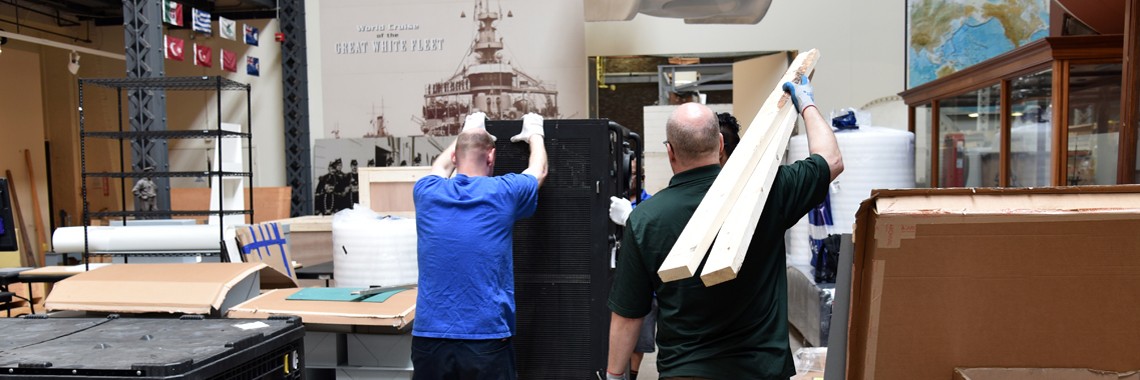
XAF Radar
The first radar utilized onboard a U.S. Navy ship was the XAF radar. Designed by the Naval Research Laboratory, the receiver was installed, along with a 17 square-feet antenna, onboard USS New York (BB-34) in December 1938. Sea trails and extensive tests continued until March 1939. For operation, radar relies upon the echo principle. A ship’s antenna transmits a radio beam which reflects off solid objects. The antenna picks up the returning beam and sends a signal to a receiver. Radar operators determine the range and direction of travel of detected objects. Adopting the radar, it would later provide distinct advantages to the fleet in World War II with its battle-ready durability. Additionally, the radar obtained accurate ranges and bearings on land masses even in bad weather, provided early warning of enemy ships, and determined ranges and bearings on aircraft, all types of combat vessels, including partially submerged submarines.
In the 1960s, both the XAF radar receiver and antenna were brought to the Naval Historical Display Center (now National Museum of the U.S. Navy) for display. The antenna was located in Willard Park until removed for conservation. The antenna is now on loan from the U.S. Navy to the National Electronics Museum, Linthicum Heights, Maryland, where it is currently on display. On July 9, 2023, the XAF Radar Receiver was removed and sent for conservation at the Naval History and Heritage Command’s, Curator Branch, Collection Management Facility, at Richmond, Virginia.
This page features selected views of the XAF Radar in operation, while being transported, and while on display at the museum.
Additional Resources
Naval History and Heritage Command
Radar and Sonar
Naval Research Laboratory
Radar Division



